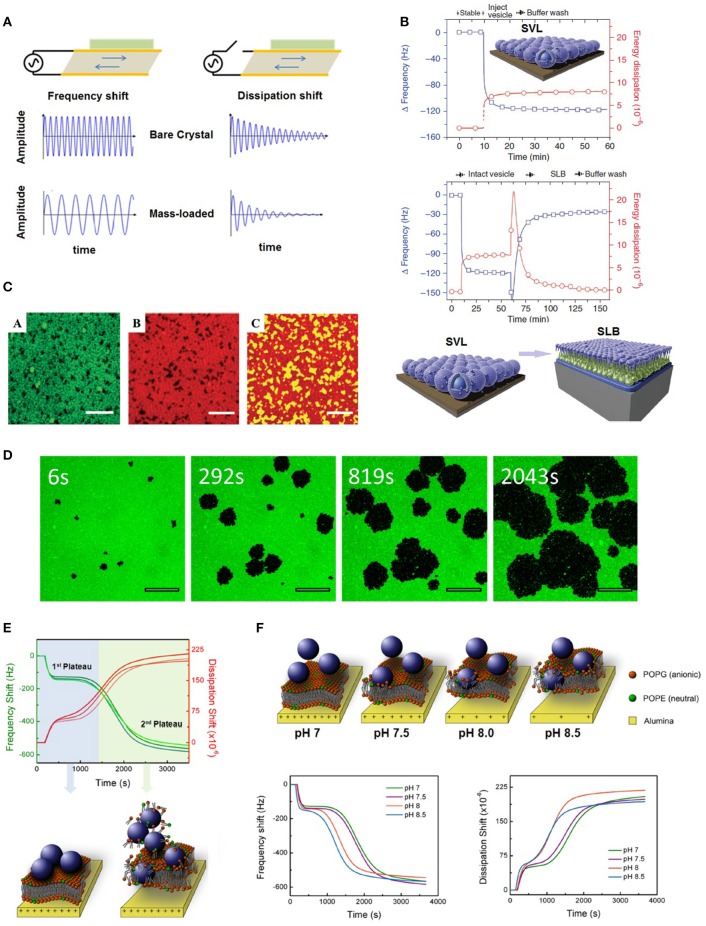Figure 1.
(A) Deposition of mass onto a quartz crystal sensor results in changes in its oscillation frequency and dissipation, (B) measured QCM-D frequency and dissipation shifts during formation of an SVL and an SLB; Adapted by permission from Macmillan Publishers Ltd: Nature Protocols (Cho et al., 2010), copyright (2010), (C) confocal laser scanning microscope image of a lipid raft formed on a QCM-D silica crystal (scale bars represent 2 μm); Adapted from Melby et al. (2016) - Published by the Royal Society of Chemistry, (D) pore formation on an SLB by hydrophobic polystyrene NPs (scale bars represent 20 μm); Reprinted with permission from Jing et al. (2014). Copyright (2014) American Chemical Society, (E) deposition of positively charged polystyrene NPs on negatively charged SLBs results in a kinetic process of bilayer disruption; Reprinted with permission from Yousefi et al. (2016). Copyright (2016) American Chemical Society, and (F) a weaker interfacial interaction between SLBs and their underlying substrates results in faster disruption of bilayers by polystyrene NPs; Reprinted with permission from Yousefi et al. (2016). Copyright (2016) American Chemical Society.

